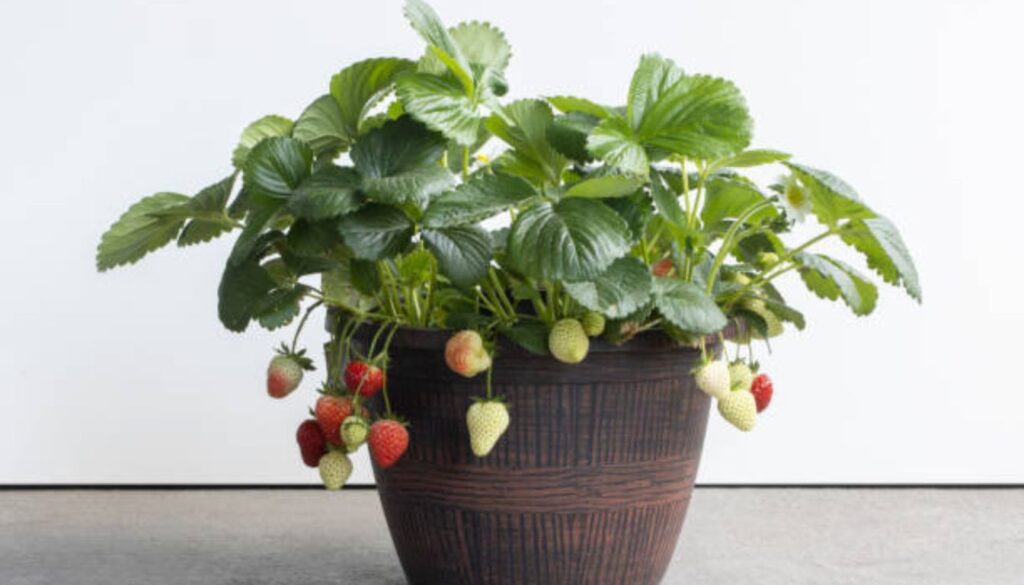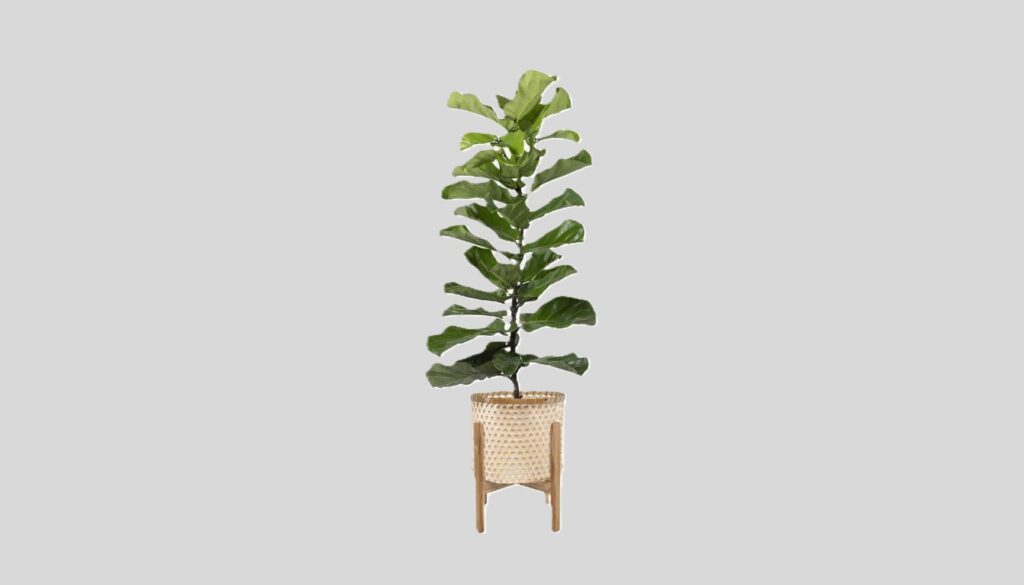Imagine picking fresh, juicy fruit right from your own home. Growing fruit indoors isn’t just a dream; it’s a rewarding reality that anyone can achieve. Whether you have a sunny windowsill or a cozy corner, there are plenty of delicious options that thrive in indoor conditions.
Overview Of Indoor Fruit Gardening
Growing fruit indoors is both fun and rewarding. Limited space doesn’t stop me from enjoying fresh produce. Small containers fit perfectly on windowsills and cozy corners. I can grow a variety of fruits that thrive without direct sunlight.
I choose dwarf varieties for indoor gardening. Dwarf citrus trees, for example, only need about twelve inches of soil. Strawberry plants adapt well to pots as well. Indoor herb gardens can also mix in strawberry plants for added flavor.
Watering indoor fruits requires some attention. I keep the soil moist but not soggy. I watch for signs of overwatering, like yellowing leaves.
Fertilizing helps growth, too. I use a balanced fertilizer every month during the growing season. Regular feeding boosts flowering and fruiting.
Lighting plays a significant role as well. I place fruits near bright windows. If natural light isn’t enough, grow lights can help simulate sunshine. These lights make growing successful, even in darker spaces.
I enjoy the process because it connects me with nature. Watching fruits develop provides satisfaction. Harvesting them culminates months of care and makes the effort worthwhile.
Factors To Consider When Growing Fruit Indoors
Growing fruit indoors requires careful thought about several factors. I’ll cover light, space, and variety to help make your indoor garden thrive.
Light Requirements – The Best Fruits to Grow Indoors: Tips for Thriving Gardens
Most fruits need plenty of light to grow well. I recommend placing your plants near a south-facing window. If natural light is limited, consider using grow lights. These lights can provide the brightness your plants crave. Fruit responds well to about 12 to 16 hours of light each day. Don’t forget to rotate your plants occasionally. This helps ensure all sides receive equal light.
Space Considerations
Space matters when growing fruit indoors. I often find that small containers work best for limited spaces. Dwarf fruit trees fit nicely on windowsills or shelves. Make sure each plant has enough room to grow without crowding. Remember, good air circulation prevents mold and pests. Keep your fruit plants spaced for optimal growth.
Variety Selection
Choosing the right fruit variety can make or break your indoor garden. Strawberries and tomatoes often thrive indoors. They adapt well to container life. Dwarf citrus trees like lemons and limes produce delicious fruit. I’ve had success with these varieties, which provide an aromatic touch to my space. Consider your taste and the amount of care each plant needs. Picking the right varieties ensures a fruitful harvest.
Best Fruits To Grow Indoors

Growing fruit indoors opens a world of flavorful options. Some fruits adapt well to indoor conditions, making them perfect choices for pots and containers.
Dwarf Citrus Trees
Dwarf citrus trees fit perfectly in small spaces. I enjoy the sweet scent of lemon or lime blossoms. These trees require bright light and warmth, needing at least 12 hours of light daily. Regular watering helps, but I ensure the pot drains well to avoid root rot. Harvesting fresh citrus feels like bringing a tropical vacation indoors.
Strawberries – The Best Fruits to Grow Indoors: Tips for Thriving Gardens
Strawberries thrive in small containers. I enjoy watching their bright green leaves flourish under the right light. These plants prefer full sun, so place them near a south-facing window for maximum exposure. Regular watering keeps the soil moist but not soggy. Picking juicy, sun-ripened strawberries straight from the plant is a treat like no other.
Tomatoes
Indoor tomatoes bring a burst of flavor to dishes. I often opt for cherry or grape varieties, as they grow compact and yield plenty of fruit. These plants love warmth and sunshine, needing about 6 to 8 hours of light each day. I give them a boost with fertilizers every few weeks. Harvesting ripe tomatoes right off the vine is incredibly satisfying.
Figs
Figs bring a touch of elegance to indoor gardening. I choose varieties like the Petite Negra, which stays small while offering sweet fruits. These trees grow well with minimal care, thriving in bright light. I water them thoroughly and allow the top inch of soil to dry out between waterings. Enjoying my fresh figs feels like a delicious secret I’ve kept just for myself.
Tips For Successful Indoor Fruit Cultivation
Growing fruit indoors can be a delightful experience. Following the right techniques leads to lush plants and tasty harvests.
Optimal Soil Conditions – The Best Fruits to Grow Indoors: Tips for Thriving Gardens
Choose soil that drains well. A mix designed for containers works best. Look for potting mix with added perlite or vermiculite to enhance drainage. The ideal pH for most indoor fruits ranges between 6.0 and 7.0. I often test my soil using a simple kit to ensure it stays within this range. Fresh soil promotes healthy growth and reduces pests. Consider repotting your plants every year to refresh their nutrient supply. Healthy soil means healthy plants, and healthier plants mean a happier me.
Watering Techniques
Watering isn’t one-size-fits-all. It’s essential to check the moisture level in the soil regularly. Stick your finger about one inch into the soil. If it feels dry, give the plant a drink. Overwatering can drown roots and stifle growth, so avoid soggy soil. I like to use pots with drainage holes to let excess water escape. Mist your plants occasionally, especially during dry seasons, to boost humidity. Remember, thirsty plants may show drooping leaves, but consistently soggy ones send their roots to the pearly gates.
Before You Go – The Best Fruits to Grow Indoors: Tips for Thriving Gardens

Growing fruit indoors has truly transformed my space and my perspective on gardening. It’s incredible how even a small area can yield such delicious rewards. By selecting the right varieties and providing proper care, I’ve found joy in nurturing my plants and watching them thrive.
Whether it’s the sweet taste of strawberries or the zesty flavor of dwarf citrus, indoor fruit gardening is an experience I highly recommend. With a little patience and the right techniques, anyone can enjoy fresh fruits right from their home. So why not give it a try? You might just discover a new passion that brightens your days.
Don’t forget to add theherbprof.com homepage to your favourites so you don’t miss out on future articles.
References – The Best Fruits to Grow Indoors: Tips for Thriving Gardens
Little Herb Encyclopedia, by Jack Ritchason; N.D., Woodland Publishing Incorporated, 1995
The Ultimate Healing System, Course Manual, Copyright 1985, Don Lepore
Planetary Herbology, Michael Tierra, C.A., N.D., Lotus Press, 1988
Handbook of Medicinal Herbs, by James A. Duke, Pub. CRP Second Edition 2007
The Complete Medicinal Herbal, by Penelope Ody, Published by Dorling Kindersley
Check the Following Article
Caffeine Pills vs. Coffee: The Best Choice for Energy Boost
Growing Dianthus Baby Doll: Low-Maintenance Perennial
DIY Tea Bags: Simple Steps for Customized Brews
Dry Orange Slices in the Microwave: Quick and Easy Guide
Frequently Asked Questions – The Best Fruits to Grow Indoors: Tips for Thriving Gardens
What are the benefits of growing fruit indoors?
Growing fruit indoors allows you to enjoy fresh produce year-round, even with limited space. It’s satisfying to watch plants grow and bear fruit, promoting a sense of accomplishment. Indoor gardening also improves air quality and decorates your living space with greenery.
What types of fruits can I grow indoors?
You can grow several fruits indoors, including strawberries, tomatoes, and dwarf citrus trees like lemons and limes. These varieties thrive in containers and adapt well to indoor conditions, making them excellent choices for indoor gardening.
How much light do indoor fruit plants need?
Indoor fruit plants typically need 12 to 16 hours of light daily. Position them near a south-facing window or use grow lights if natural light is insufficient. Regularly rotate plants for even light exposure.
What soil is best for growing fruit indoors?
A well-draining soil like a potting mix enriched with perlite or vermiculite is ideal for indoor fruit plants. Aim for a soil pH between 6.0 and 7.0 to ensure healthy growth and fruit production.
How often should I water my indoor fruit plants?
Water your indoor fruit plants when the top inch of soil feels dry. Use pots with drainage holes to avoid overwatering, and consider misting plants occasionally to maintain humidity.
Do I need to fertilize my indoor fruit plants?
Yes, regular fertilization is important for healthy indoor fruit plants. Use a balanced fertilizer every few weeks to provide necessary nutrients, especially during the growing season, to promote fruit development.
How can I protect my indoor fruit plants from pests?
Ensure good air circulation around your plants and regularly check for pests. If you notice insects, take action quickly, either by handpicking or using organic pest control methods to keep your plants healthy.

